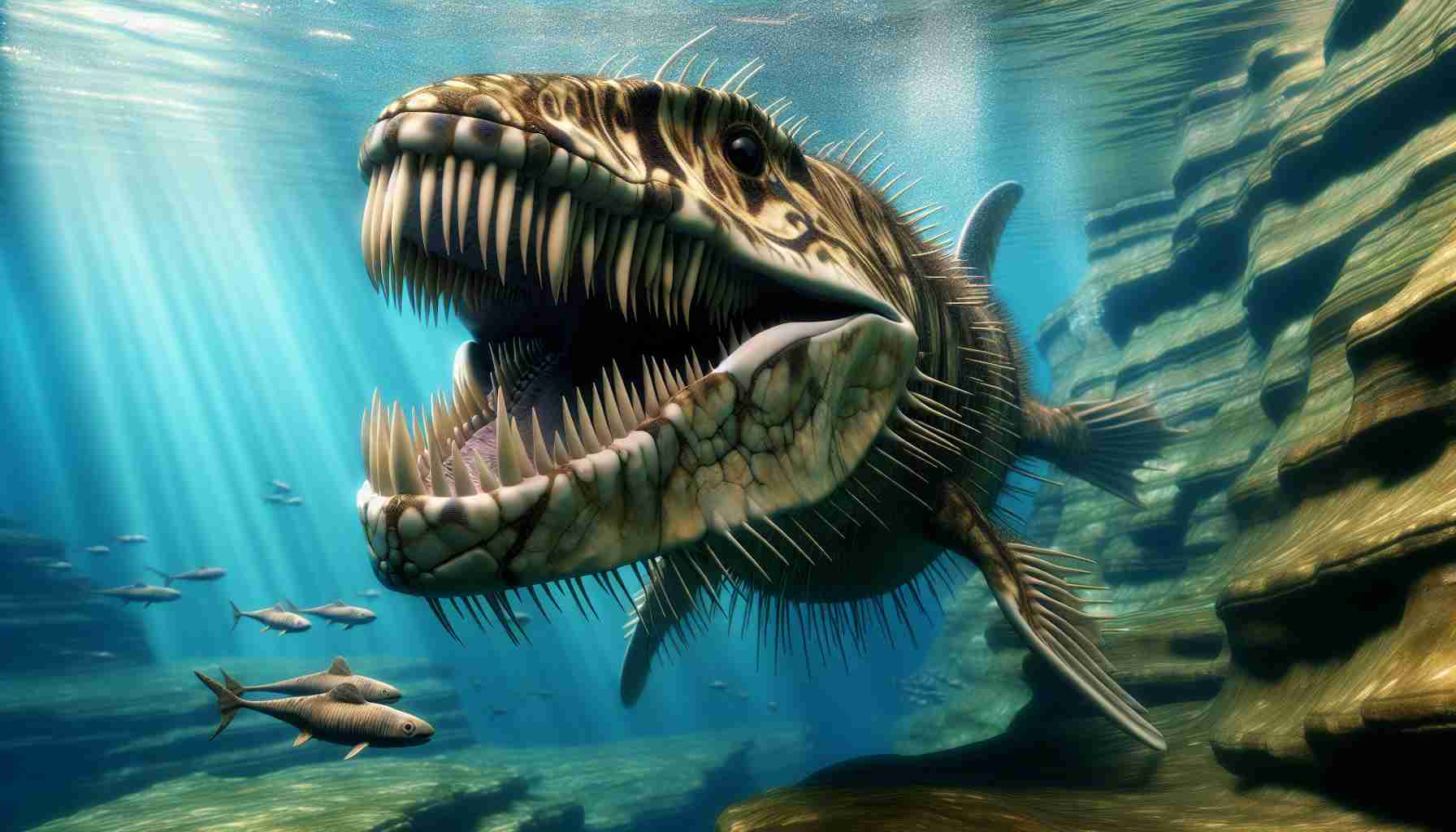Ancient Predator with Unusual Dental Structure
Long ago, a prehistoric sea creature roamed the oceans with rows of unconventional teeth. These large, rounded teeth were not designed for cutting prey but for crushing creatures with shells.
However, recent findings in the northeast quarries of Mexico offer researchers a clearer glimpse into this ancient predator’s appearance. A fossil discovered in limestone quarries provides insight into the anatomy of the creature, shedding light on its skeletal structure and soft tissue body contour. The discovery, detailed in a study published in a scientific journal, unveils the position of this shark genus, Ptychodus, in the shark evolutionary tree, along with other previously unknown characteristics.
Discovery of Prehistoric Ancestor of Modern Sharks
Most Ptychodus species existed between 100 and 80 million years ago, toward the end of the Cretaceous period. The fossils recovered in Nuevo León, Mexico, date back approximately between 93.9 and 91.85 million years. Unlike other shark fossils typically limited to teeth, these specimens offer insights into the soft tissue preservation due to unique environmental conditions.
Through the analysis of multiple fossils, researchers have categorized Ptychodus under the Lamniformes order, a group that includes the extinct Otodus megalodon and the modern great white shark. The findings shed light on the evolutionary history of modern-day oceanic sharks.
Mysterious Predatory Behavior Revealed
Detailed examination of the body silhouette indicates that this ancient shark was not merely a bottom-dwelling species but rather a fast-swimming predator that likely fed on sea turtles and large ammonites. While its exact diet remains unknown, this revised hypothesis provides clues about its potential competition with other marine predators during the Late Cretaceous period.
The discovery offers a significant leap forward in understanding the complex evolutionary history of Lamniform sharks, highlighting the extraordinary biodiversity that has evolved over the course of millions of years.
New Insights into the Prehistoric Sea Creature with Unique Crushing Teeth
In addition to the fascinating discoveries detailed in the previous article about the prehistoric sea creature Ptychodus, further research has revealed intriguing facts that shed more light on this ancient predator’s biology and behavior.
One crucial question that arises is: What role did the unique crushing teeth of Ptychodus play in its ecosystem? The answer lies in its feeding habits; instead of relying on sharp teeth for cutting prey, this creature used its specialized dental structure to crush hard-shelled creatures such as mollusks and crustaceans, providing a valuable adaptation for exploiting food sources not easily accessible to other predators.
Furthermore, recent studies have suggested that Ptychodus likely had a wider geographical distribution than previously believed, with fossils found in various locations across the globe. This raises the question: How did environmental factors influence the evolution and diversity of Ptychodus species in different regions? The varying conditions in these environments may have played a significant role in shaping the adaptations and behaviors of these prehistoric sharks.
An ongoing controversy in the scientific community revolves around the social behavior of Ptychodus. Some researchers propose that these creatures may have exhibited complex social structures or cooperative hunting behaviors, while others argue that they were primarily solitary hunters. Resolving this debate could provide valuable insights into the evolutionary strategies of ancient marine predators.
Advantages of studying prehistoric sea creatures like Ptychodus include gaining a deeper understanding of ancient marine ecosystems, their biodiversity, and the evolutionary processes that have shaped present-day oceanic species. By piecing together the puzzle of these ancient predators, scientists can glean valuable information about the interconnectedness of species and how environmental changes over millions of years have influenced the development of marine life.
However, there are challenges associated with studying ancient marine creatures, including the limitations of fossil evidence, the difficulties of interpreting behavior solely from skeletal remains, and the gaps in our knowledge about the nuances of prehistoric ecosystems. Unraveling these mysteries requires interdisciplinary collaboration, innovative research methods, and a willingness to challenge existing assumptions about the past.
For further exploration of prehistoric sea creatures and their evolutionary significance, interested readers can visit the Smithsonian Magazine, which features in-depth articles on paleontology and marine biology. The Smithsonian Institution’s vast collection of natural history specimens provides a wealth of resources for understanding the history of life on Earth.
 Experience Gaming Nirvana with the CrystalWave 5000 Wireless Headset
Experience Gaming Nirvana with the CrystalWave 5000 Wireless Headset  Breakthrough Discovery Unlocks Potential for Next-Generation Quantum Computers
Breakthrough Discovery Unlocks Potential for Next-Generation Quantum Computers  Groundbreaking Advancements in Quantum Acoustodynamics
Groundbreaking Advancements in Quantum Acoustodynamics  New Proteomics Advancements
New Proteomics Advancements  Quantum Innovation: Revolutionizing Aerospace Missions
Quantum Innovation: Revolutionizing Aerospace Missions  Innovative Collaboration Between Two Tech Giants
Innovative Collaboration Between Two Tech Giants  Futuristic Transformations in Electric Vehicle Lineup by Stellantis
Futuristic Transformations in Electric Vehicle Lineup by Stellantis  New Launch Schedule for Stellantis Electric Vehicles
New Launch Schedule for Stellantis Electric Vehicles  Groundbreaking Innovations in Electric Vehicle Technology
Groundbreaking Innovations in Electric Vehicle Technology 